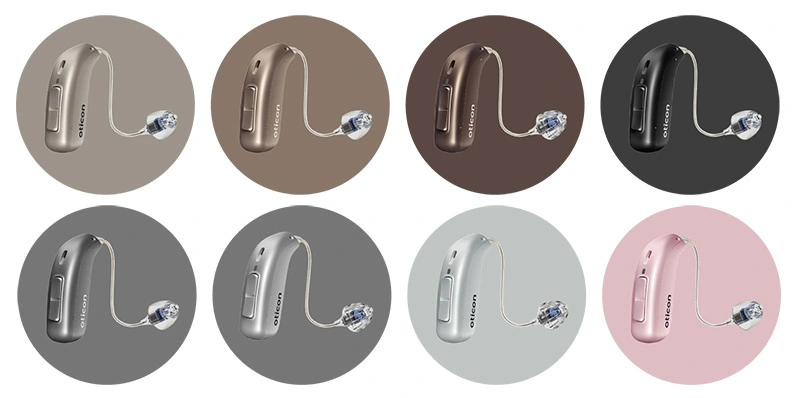Hearing aids are pivotal tools in audiology, designed to address auditory impairments and enhance sound perception for individuals experiencing hearing loss. Beyond their primary amplification function, these devices are multifaceted assets, contributing to various aspects of daily life.
From fostering improved communication and social connections to acting as a crucial component in personal safety, the impact of hearing aids extends into unexpected dimensions, showcasing their indispensable role in the lives of those with hearing impairments.
| Table of Contents The Traditional Role of Hearing AidsUnexpected Benefits of Hearing AidsImproved Mental HealthEnhanced SafetyCareer AdvancementBetter RelationshipsImproved Quality of LifeTechnological AdvancementsAddressing common misconceptions about hearing aidsTexas Sinus & Snoring: Best in Technological Advancements |
The Traditional Role of Hearing Aids
Hearing aids traditionally function as amplification devices, diligently working to improve the audibility of sounds for individuals facing hearing challenges. Their primary goal is to address the common issues associated with hearing loss, which may include difficulty hearing conversations, distinguishing speech in noisy environments, or experiencing a diminished capacity to perceive specific frequencies.
These devices capture incoming sounds through a microphone, convert them into electrical signals, amplify them, and deliver enhanced sounds to the ear through a speaker. Common reasons for adopting hearing aids include:
- Age-related hearing loss.
- Exposure to loud noises over time.
- Various medical conditions affect auditory function.
Unexpected Benefits of Hearing Aids
Discussing 5 unexpected benefits that underline the nature of hearing aids, extending their significance beyond the conventional realm of auditory improvement.
- Improved Mental Health
Beyond their primary function of improving hearing, hearing aids contribute significantly to mental well-being. Individuals who utilize hearing aids often report a positive impact on their mental health, including reduced feelings of isolation and depression. These devices foster emotional resilience and overall psychological wellness by facilitating more transparent communication and connection with the surrounding environment.
- Enhanced Safety
Hearing aids serve as invaluable tools in enhancing safety, particularly in environments where auditory cues are essential. Whether it’s being aware of approaching vehicles, hearing alarms, or responding to emergency signals, individuals with hearing aids experience an improved awareness of their surroundings. This heightened situational awareness not only contributes to personal safety but also extends to the safety of those around them.
- Career Advancement
Individuals with hearing aids often report improved job performance and increased opportunities for career advancement. Clear communication is integral in the workplace, and hearing aids play a pivotal role in ensuring that individuals can actively participate in meetings, engage in discussions, and collaborate effectively with colleagues, positively influencing their professional trajectory.
- Better Relationships
By facilitating clearer and more effective communication, individuals using hearing aids experience improved connections with family, friends, and colleagues. The ability to actively engage in conversations without the strain of hearing difficulties fosters a deeper understanding and stronger bonds. Consequently, the positive impact on relationships extends beyond the individual, creating a more inclusive and enriching social environment.
- Improved Quality of Life
One of the most profound and overarching benefits of hearing aids is improving overall quality of life. Beyond addressing specific auditory challenges, these devices empower individuals to participate fully in the activities and experiences that contribute to a fulfilling life. Whether enjoying social gatherings, engaging in hobbies, or savoring everyday sounds, hearing aids play a pivotal role in restoring a sense of normalcy and vibrancy to life.
Technological Advancements
In recent years, hearing aids have undergone remarkable technological advancements, transforming them into highly sophisticated and versatile devices. Modern hearing aids are equipped with features that extend far beyond basic amplification. Connectivity to smartphones has become a standard, allowing users to integrate their hearing aids into their digital lives seamlessly. This enhances convenience and opens up avenues for customization and control, enabling users to adjust settings discreetly and in real time.
Furthermore, noise-canceling capabilities have become integral to modern hearing aids, significantly improving the user experience in challenging acoustic environments. These advanced features reduce background noise, ensuring that the desired sounds, such as conversations or music, are clearer and more distinct. The integration of cutting-edge technology has propelled hearing aids into a new era, offering users improved hearing and a range of features that align with the demands of contemporary living.
Addressing Common Misconceptions About Hearing Aids
Despite the technological strides made in hearing aids, misconceptions persist. By dispelling these misconceptions, individuals can better understand the benefits and functionalities of modern hearing aids, encouraging informed decisions about their auditory health.
- Exclusive to the Elderly
Individuals of all ages can experience hearing impairment, and the decision to use hearing aids is based on the need for auditory support rather than age. Whether young or old, anyone experiencing hearing difficulties can benefit from hearing aids to improve their overall quality of life.
- Bulky and Conspicuous
Another prevalent misconception is that hearing aids are bulky and easily noticeable. Contrary to this belief, modern hearing aids are designed with aesthetics in mind. They often come in discreet, comfortable designs, avoiding the stereotype of large and conspicuous devices.
- Limited Effectiveness
Some may believe that hearing aids offer limited effectiveness, especially in challenging listening environments. However, technological advancements have significantly improved the efficacy of hearing aids, particularly with the integration of noise-canceling capabilities.
- Uncomfortable to Wear
There’s a misconception that hearing aids are uncomfortable to wear for extended periods. In reality, modern hearing aids are designed with user comfort in mind. Many individuals adapt quickly to wearing them, and professional fitting and adjustments ensure a comfortable and personalized experience. Advances in materials and design contribute to the overall comfort of wearing hearing aids throughout the day.
- Not Necessary for Mild Hearing Loss
Some individuals may believe hearing aids are unnecessary for those with mild hearing loss. However, even mild hearing loss can significantly impact daily life and communication. Hearing aids are designed to address a spectrum of hearing impairments, from mild to severe. They provide individuals with the necessary support to enhance their ability to hear, engage, and participate in various activities.
- Affects Sinuses
Most people have a concern about can hearing aids affect your sinuses. Hearing aids themselves typically do not directly affect the sinuses. However, some individuals may initially experience a feeling of fullness or pressure in the ears when they start using hearing aids. This sensation is often temporary and may be due to the adjustment period as the ears get used to the new sounds amplified by the devices.
If someone already has sinus issues or knows how to cure sinus permanently, they might perceive changes in their ear sensations when using hearing aids. In such cases, consulting with a healthcare professional or an ear, nose, and throat specialist for personalized advice is essential.
Texas Sinus & Snoring: Best in Technological Advancements
At the forefront of these technological advancements is Texas Sinus & Snoring, committed to providing the best in hearing health solutions. Modern hearing aids have evolved, addressing hearing loss and offering unexpected benefits such as improved mental health, enhanced safety, and increased opportunities for career advancement. The integration of cutting-edge features like connectivity to smartphones and noise-canceling capabilities exemplifies the commitment to seamlessly integrating these devices into the lives of individuals seeking auditory support.
Texas Sinus & Snoring stands as a beacon of excellence in providing hearing solutions beyond expectations, offering a bridge to a world where hearing is restored and enhanced.
Frequently Asked Questions
Q. At what age should I consider getting hearing aids?
Hearing aids are not age-specific. Anyone experiencing hearing difficulties, regardless of age, should consider getting a hearing assessment. Texas Sinus & Snoring provides personalized advice to determine the appropriate time for utilizing hearing aids based on individual needs.
Q. Will wearing hearing aids be uncomfortable or noticeable?
Modern hearing aids are designed for comfort and aesthetics. Texas Sinus & Snoring offers a range of discreet options, ensuring that comfort and appearance are prioritized. Many users find these devices comfortable for extended wear.
Q. Do I really need hearing aids for mild hearing loss?
Even mild hearing loss can impact daily life and communication. Texas Sinus & Snoring recommends considering hearing aids for mild to severe hearing impairments, as these devices offer valuable support in various listening situations.
Q. Can hearing aids help in noisy environments?
Yes, technological advancements, including noise-canceling capabilities, have significantly improved the effectiveness of hearing aids in noisy environments. Texas Sinus & Snoring provides hearing aids with features that enhance hearing and understanding of speech in challenging acoustic settings.
Q. How do I adjust settings on my hearing aids, especially with the integration of smartphones?
Modern hearing aids often come with smartphone connectivity for convenient adjustments. Texas Sinus & Snoring offers guidance on using these features, ensuring users can easily customize settings for different environments and preferences.




